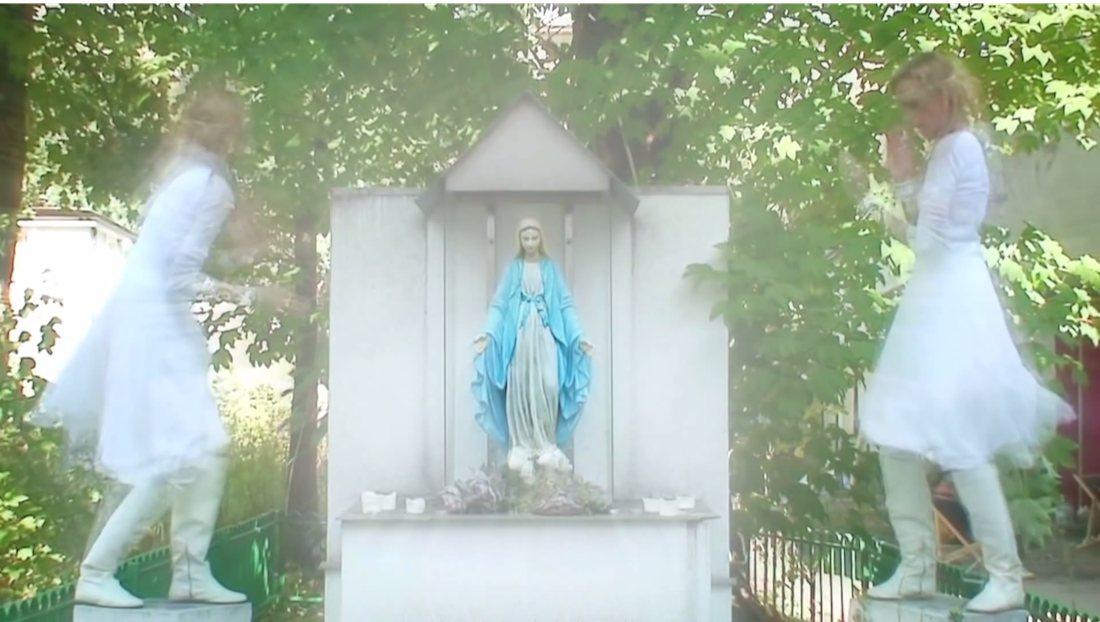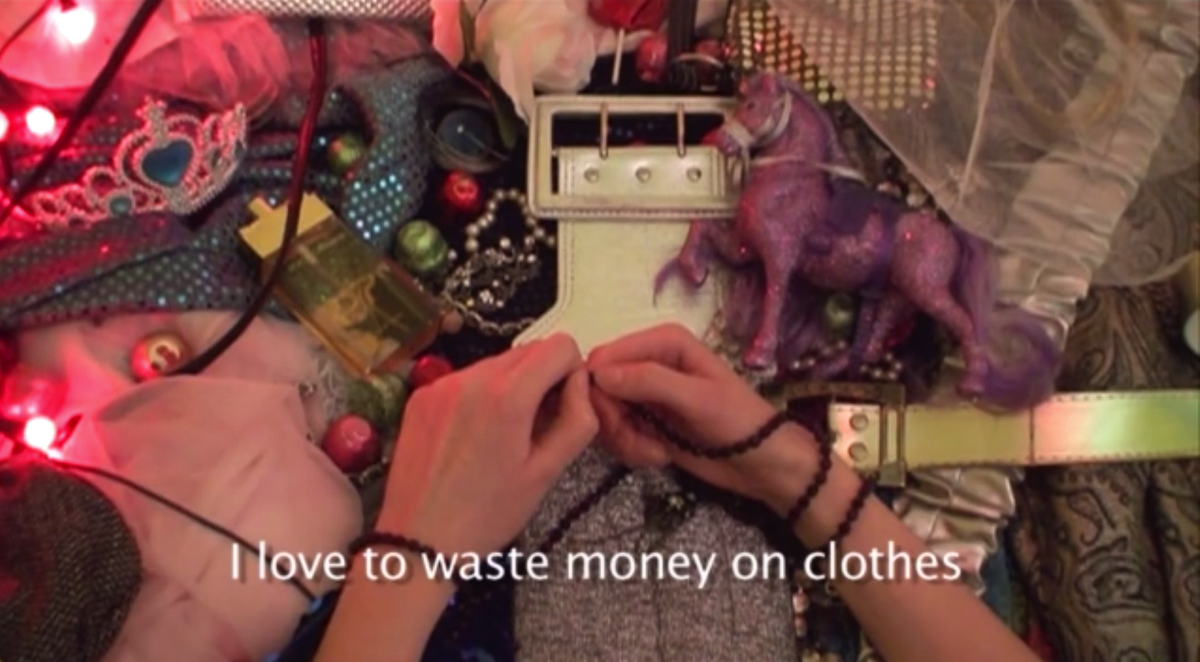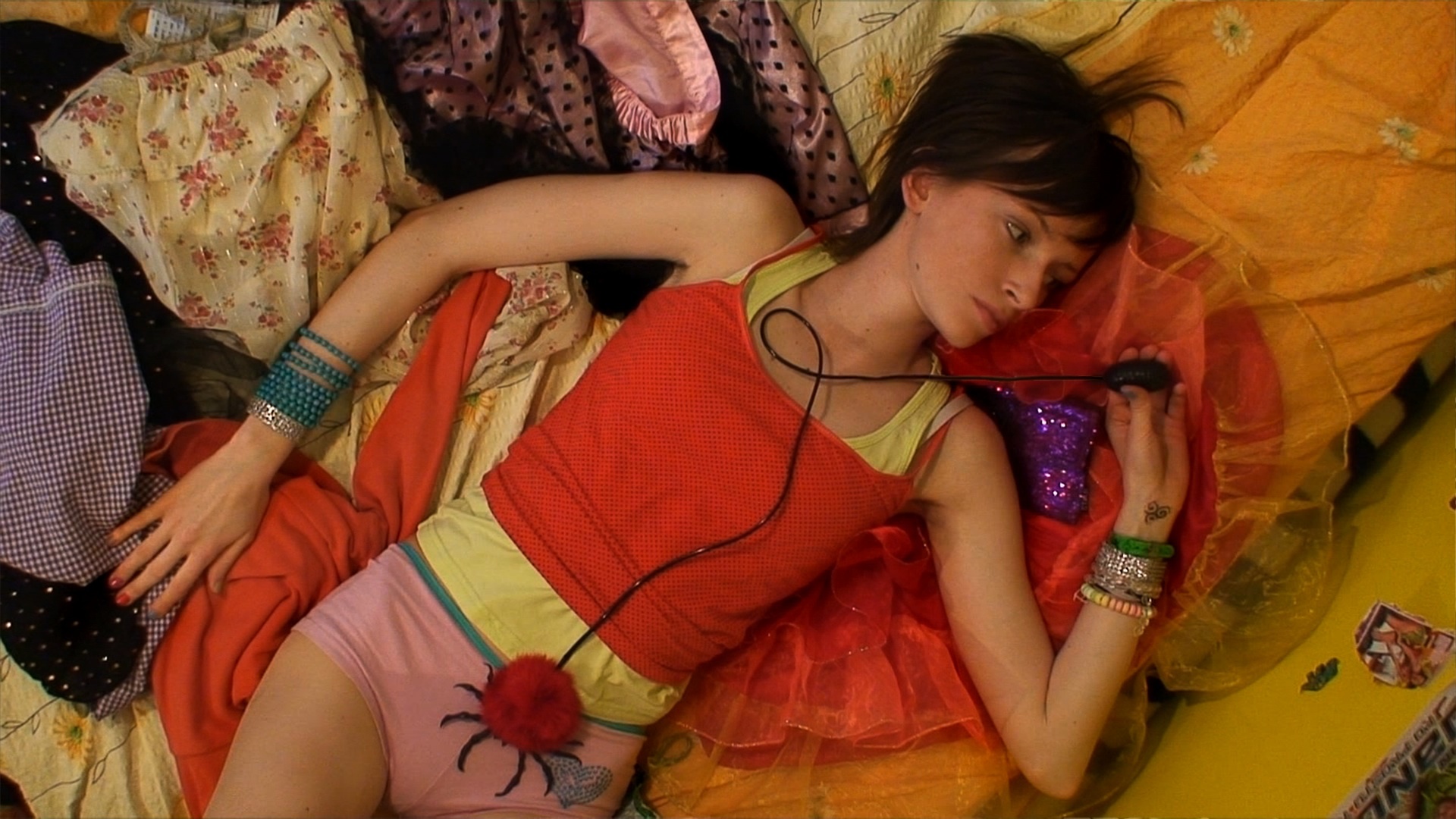“From Pope Francis, I’ve learned what to think; from Leonardo da Vinci, how to form these thoughts; and from Britney Spears, how to be a virgin, haha!” says visual artist and self-professed evangelical pop star Ada Karczmarczyk. Following a transformative spiritual conversion, Ada has spent the past six years creating a new kind of religious art. Whether they’re showing ass-shaking at a shrine of the Virgin Mary or comparing High Mass rituals to acid trips, Ada’s videos blend evangelical messages with Internet age aesthetics. As her Way to Conversion video series screens at Postmasters Gallery, we catch up with Ada about Beyoncé and psychedelics.

How has Poland’s economic and religious environment shaped your artmaking?
I was raised by a rather restrictive Catholic family who passed on a great amount of values to me regarding the lifestyle that’s marked out by a religious way of thinking–sacrifices, hard work and denying oneself the pleasures of body and soul. Back then, everybody thought the church was cool because Pope John Paul II was a Pole and because it contributed to the fall of communism. But when my hormones started to kick in, along came first rebellions and extreme behavior. Consumerism started to play religion’s role in my life as capitalist philosophy grew stronger and stronger.
The Smoleńsk plane crash in 2010, which resulted in the President and many Polish politicians’ deaths, ignited a cultural conflict between the Catholic part of the society–represented by older, conservative generations–and younger people who were drawn by Western European ways of thinking. This clash of identity between the two sides made me ask myself some questions about who I am, where I’m from and where I should go. I wanted to merge these two pieces together, into one body, one soul. It turned out that the best way to do it was through art.

Who are some of your favorite pop stars?
I like Beyonce, Madonna, Lady Gaga, Katy Perry the most. Being a star is a mission of hard work, sacrifices, and psychological endurance. I don’t think it’s a coincidence that all of them were raised with Catholic values; this must have strengthened them internally and prepared them for future challenges. In Catholicism, women cannot become priests, but if they feel they have something important to pass on to others, why wouldn’t they become pop-stars instead? Being a star is not only about singing catchy songs and dancing in video clips, but also showing the target audience the right direction–guiding them through life!
Msza Swięta (High Mass), 2013.
In one of your videos, the narrator whispers phrases like “I love when people make decisions for me” over a pile of sparkly objects. Tell us more about the gender dynamics at play in your work.
Before my conversion, I was an empty-headed girl raised in clubs staggering around after free drinks. I didn’t have any deep thoughts and was fascinated by everlasting parties. This work tells a story of a young person’s confession who was raised in a consumerist reality and treats such an “empty state” as a day-to-day ritual. Later on, I reached a breakthrough in my creative activity. I started to ask myself questions and search for answers–that is how I got to Christianity and it’s why I’d call myself a Catholic feminist. I’ve come to this point on the basis of my own philosophical thoughts, not because some priest packed it into my head.
I want to combine the characteristics that might seem uncombinable. On the one hand, I am self-sufficient: I program beats on a computer, record vocals in a wardrobe, create video clips in my small room and I produce all of this myself. On the other hand, I am fascinated by Christianity’s aura of subtlety, sensitivity, and prudence regarding the subject of femininity. I don’t think that Catholicism is a great threat for women because if men had really been more like Jesus, there wouldn’t be as many women suffering in this world. But in reality, it unfortunately sometimes it looks differently. That’s why I want to change it and inspire both boys and girls to think deeply, evangelize and change for the better!

Your videos render mass through trippy technicolor LSD visuals and feature Satan whack-a-mole games. Has your work been called blasphemous?
In Poland, I’m attacked for blasphemy by many Catholics who don’t watch the films properly and make their opinions on superficial observations. This is because they are used to seeing religious messages through orthodox aesthetics only. I don’t have the intention to violate somebody’s religion through my art, I just want to animate and energize things that have always been shown in very passive way and don’t attract young people today.
In order to illustrate the spiritual experience, I’ve used visual effects reminiscent of an LSD trip. Drugs, like faith, extend the imagination in a way, and when you believe, you feel like you’re a little bit high all the time. The difference is that faith builds you as a better person, and taking drugs is an expensive sport which leads to addiction and death. My movie shows a more positive alternative to drugs, but it’s also quite psychedelic in terms of imagination.
What role does the Internet play in your work?
The Internet is my muscle—it’s the best tool for me to perform my evangelical mission. When I decided to pass on religious guidance, I realized that I had no contacts, money, or power to make my words reach an audience. But I also realized I could use the power of the Internet to connect to people everywhere. Dancing near the Virgin Mary shrine, butt shaking, or chasing paintings of Jesus aren’t just funny videos–there is also an important message in the texts, music and visuals.
Why does the Catholic Church need contemporary art and vice versa?
Nowadays, young people develop faster and don’t want to be treated as an easily manipulated and thoughtless flock of sheep. They have internal spiritual needs, but they are repelled by the old-fashioned way of serving religious content. They need a more ambitious and intelligent evangelization that encourages them to ask themselves questions and delve deeper. This is what art is made for. Art cannot be a tool of indoctrination used to force something on somebody, but it can stimulate people’s self-reflection.Unlike traditional evangelism, which implements rules by force and often tries to intimidate, I do not give the audience the right answers. I use humor in my art to draw attention to difficult issues, but I also shock in order to get my audience thinking.
Way to Conversion runs through July 18 at Postmasters Gallery, more information here
Credits
Text Emily Manning
